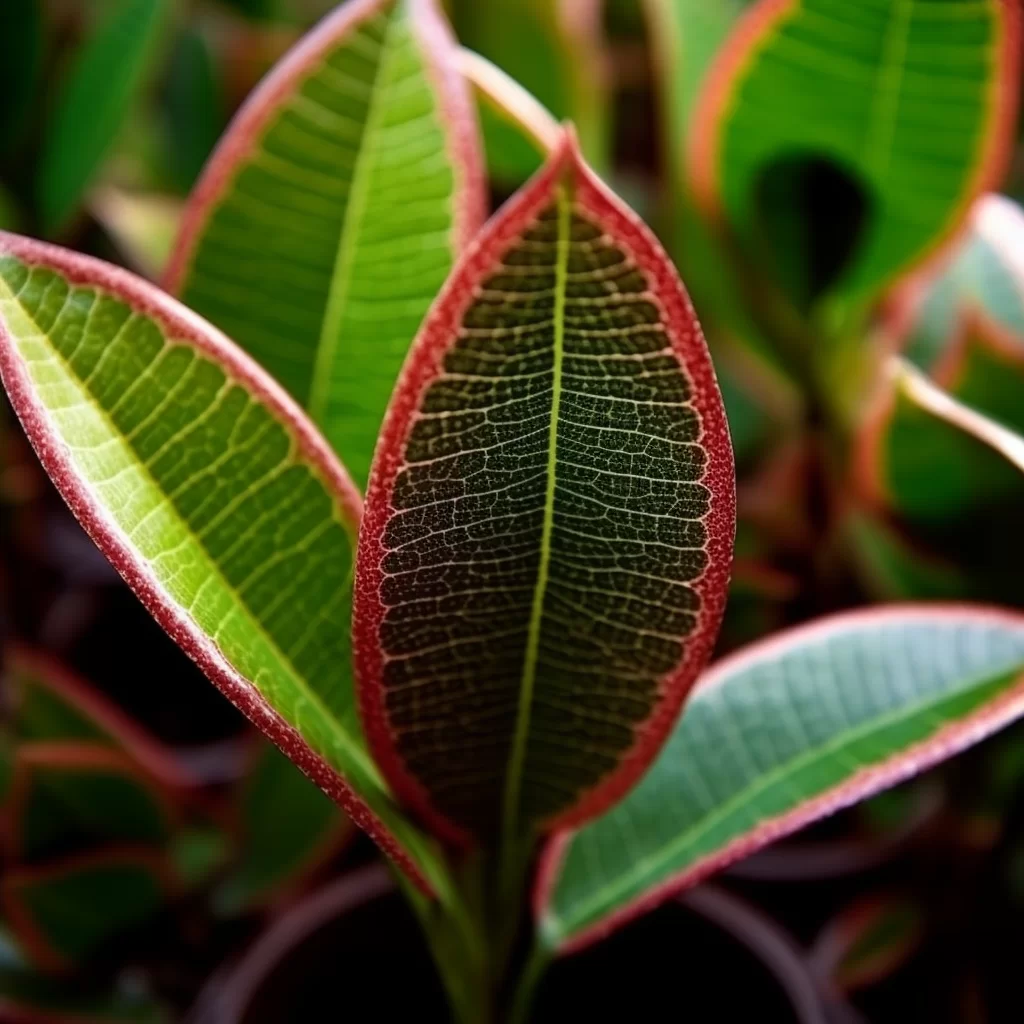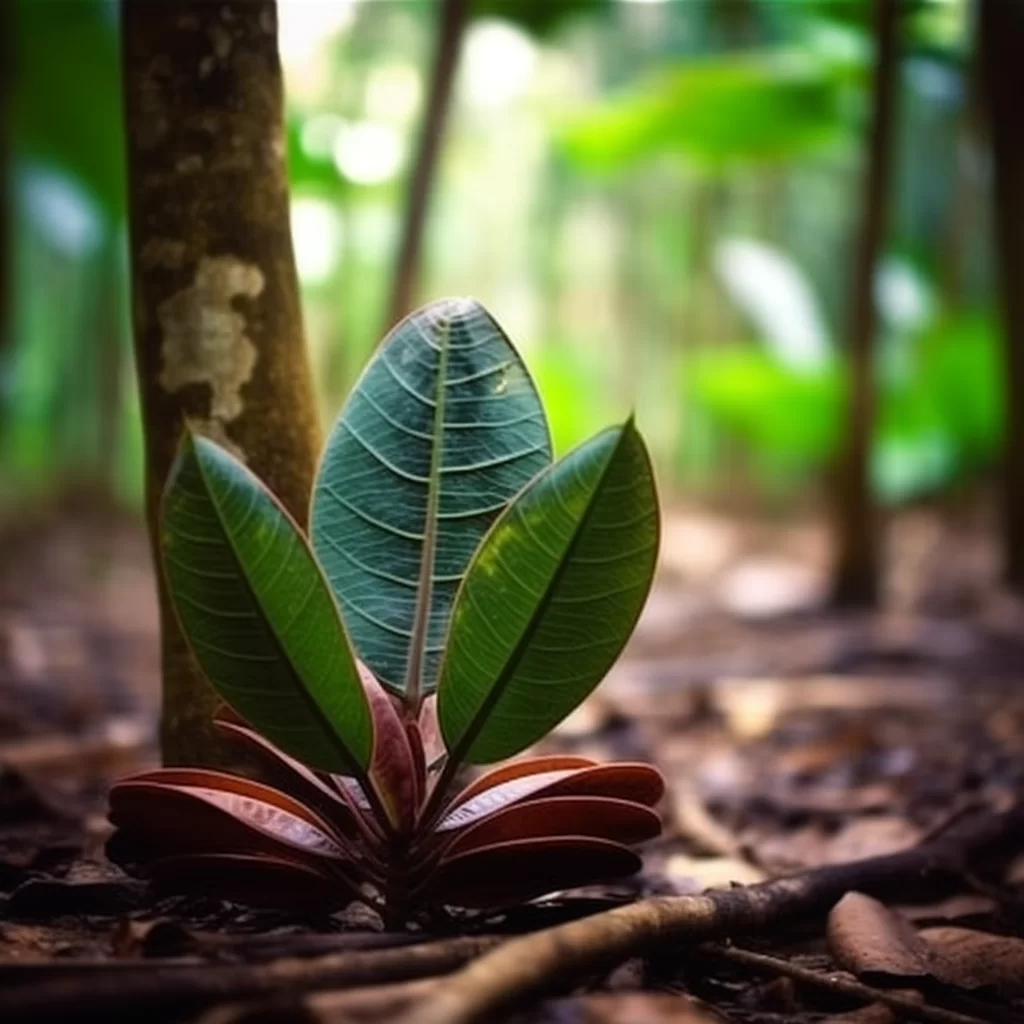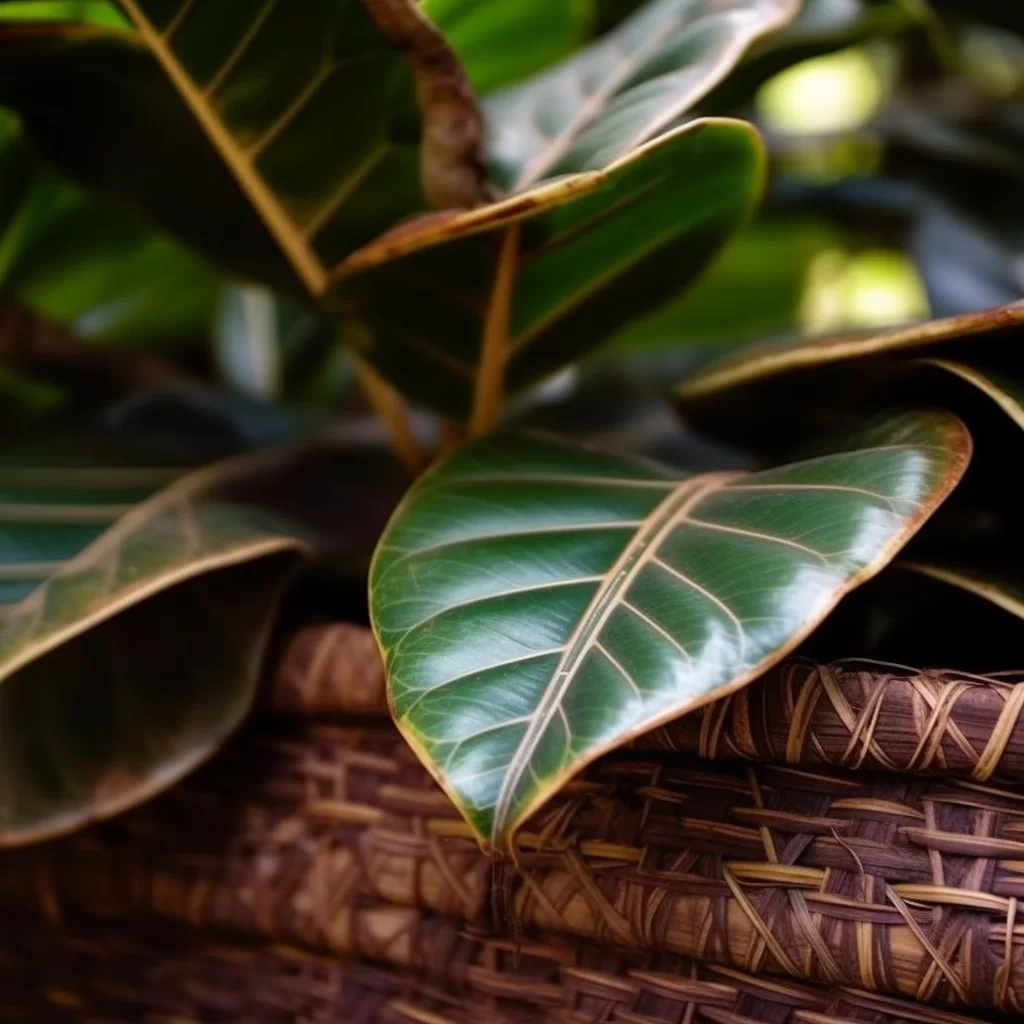Story of Day :
Contents
The Tineke Rubber Plant: A Complete Guide and Care Tips
If you’re looking for a unique houseplant that is easy to care for and adds a touch of color to your space, the Tineke rubber plant is the perfect choice.
This stunning plant has become popular in recent years due to its striking foliage, which features cream-colored stripes on dark green leaves.
Origins of the Tineke Rubber Plant
The Tineke rubber plant, scientifically known as Ficus elastica, is a popular member of the ficus family that originates from Southeast Asia.
In the wild, it’s known to grow up to an astonishing height of 100 feet! However, when planted as an indoor houseplant, it usually reaches a modest height of only 3-5 feet.
That said, this charming plant is still a favorite among gardeners and homeowners alike due to its striking foliage and ability to purify the air.The Tineke rubber plant boasts large glossy leaves with white or yellow variegation that makes them stand out in any room.
It’s also an excellent choice for those looking for low-maintenance plants since they’re relatively easy to care for and don’t require frequent watering.
While they do appreciate bright indirect light and well-draining soil, these hardy plants can survive in lower light conditions or occasional neglect without losing their charm.
Whether you’re new to indoor gardening or have been doing it for years – adding a Tineke rubber plant can be just what you need to spruce up your living space while providing numerous benefits!

Care Tips for Your Tineke Rubber Plant
If you want to keep your Tineke rubber plant healthy and happy in your home, you need to know how to take good care of it.
Firstly, make sure that the plant is placed in a bright spot with indirect sunlight.
Direct sunlight can damage the leaves of the plant, so it’s important to find a spot that gets plenty of light but is not directly exposed.
Secondly, keep the soil moist but not waterlogged.
Overwatering can lead to root rot and other problems for your Tineke rubber plant.
To check if your soil needs watering, simply stick your finger into the top inch or so – if it feels dry, then it’s time to add some water.Additionally, it’s important to dust off the leaves regularly using a soft cloth or brush as this helps with photosynthesis and keeps pests at bay.
You may notice that your Tineke rubber plant sheds its lower leaves as they age – this is normal and nothing to worry about! Lastly, fertilize your rubber plant every couple of weeks during spring and summer months using a balanced fertilizer mix (10-10-10) which will provide essential nutrients for growth.
With these simple care tips in mind, you’ll be able to enjoy a thriving Tineke rubber plant in no time!
- Light: The Tineke rubber plant prefers bright but indirect light.
Avoid placing it in direct sunlight as this can cause leaf scorching.
- Watering: Water moderately so that soil stays moist but not damp.
Overwatering can lead to root rot while underwatering can cause leaves to fall off.
- Humidity:T he ideal humidity level should be around 50%.
If the air in your home tends to be dry, consider using a humidifier or place a tray of water near your plant’s pot.
- Fertilizing: During growing season (spring through summer), fertilize once every two weeks with water-soluble fertilizer diluted at half strength.
- Potting Mix: The tineke rubber plant prefers well-draining, loose potting soil to grow.

Common Problems and How to Fix Them
Taking care of a Tineke rubber plant is generally quite manageable, even for those with limited plant experience.
However, as with any living thing, there are still some potential issues that may arise.
For example, these plants may develop yellowing leaves if they receive too much water or not enough sunlight.
In addition to this, overwatering can lead to root rot and damage the plant’s health overall.
Ensuring proper drainage and monitoring watering levels can help prevent these problems from occurring.Despite these potential challenges, owning a Tineke rubber plant is still a relatively low-maintenance and rewarding experience.
With proper care and attention, you’ll be able to enjoy the beauty of this striking foliage for years to come.
It’s worth noting that each individual plant will have its own unique needs based on factors like climate and humidity levels – but by taking it one step at a time and following basic guidelines for care such as ensuring adequate light exposure and not overwatering you should be able to keep your Tineke looking lush!
- Yellow Leaves: Yellow leaves may indicate overwatering or underwatering.
Adjust watering accordingly.
- Brown Tips: Brown tips can be caused by lack of humidity or excess fertilizer.
Increase humidity levels and reduce the amount of fertilizer used.
- Dry Foliage: If your tineke rubber plant’s foliage looks dry, it could mean the soil is not retaining enough moisture.
Consider misting the leaves with water a couple of times per week.
- Pests: The most common pests that affect tineke rubber plants are mealybugs and spider mites.
Regularly inspect your plant for signs of infestation and treat with insecticidal soap if necessary.
 Do you have a Tineke rubber plant and want to grow more of them? Propagating your Tineke rubber plant is a great way to do this.
Do you have a Tineke rubber plant and want to grow more of them? Propagating your Tineke rubber plant is a great way to do this.
One method is by stem cuttings.
Take a cutting that has at least one node, which is where the leaves grow from the stem.
Remove any lower leaves and dip the end of the cutting in rooting hormone before placing it in water or soil.
Keep it moist and in indirect light until roots begin to form, then transfer it to a pot with well-draining soil.Another method for propagating your Tineke rubber plant is through air layering.
Choose a healthy branch and make an incision about halfway through the branch just beneath a node.
Cover the wound with sphagnum moss or another moist medium, then wrap plastic around it tightly to hold in moisture.
Roots will begin growing from this spot over time, once they’re established cut off below that point and transplant into soil! With these tips, you can add more beautiful Tineke rubber plants to your home garden or share them with friends!
If you’re a plant lover and want to expand your collection of Tineke rubber plants, or if you just want to gift them to your friends, then propagating through stem cuttings is a great option.
It’s an easy and inexpensive way to get more plants without having to go through the hassle of buying new ones.
Furthermore, Tineke rubber plants are low-maintenance indoor plants that can add an aesthetic appeal as well as promote healthy living by purifying the air in your home.To propagate Tineke rubber plants, all you need is a sharp knife or scissors and some potting mix.
Simply cut off a stem from the main plant that has at least three leaves on it and place it in water for several weeks until roots begin to form.
Afterward, transfer it into soil and keep it moist until new growth appears.
In no time at all, you’ll have more beautiful Tineke rubber plants for yourself or others!

- Cut off a healthy stem from your Tineke rubber plant just below a node (where leaves emerge).
Dip the cut end in rooting hormone powder (optional). - Place the cutting in water or moist soil in bright but indirect light.
After analyzing all the evidence and arguments presented, it can be inferred that there are several possible outcomes or solutions.
While some may argue for one specific resolution, it is important to consider all perspectives and weigh the pros and cons of each option.
Additionally, further research and analysis may be necessary to fully understand the magnitude and implications of this issue.It is important to note that no matter what decision is made, there will likely be consequences both positive and negative.
It is up to us as individuals and society as a whole to work towards minimizing any negative impacts while maximizing the benefits.
Ultimately, taking into account multiple viewpoints, utilizing critical thinking skills, considering potential outcomes, and striving towards ethical decision-making can lead us towards a resolution that benefits everyone involved.
If you’re on the lookout for a low-maintenance and attractive houseplant that can lighten up your living space, the Tineke rubber plant is an excellent option to consider.
Not only does it add a touch of greenery to your home decor, but it also boasts stunning foliage that will leave you in awe.
Caring for this plant is pretty straightforward and doesn’t require any special skills or expertise.
With just a few simple care tips such as keeping it away from direct sunlight and avoiding overwatering, you can keep your Tineke rubber plant thriving throughout the year.When you’re looking for an easy-to-care-for houseplant that has plenty of visual appeal, there are few better options than the Tineke rubber plant.
This versatile indoor tree boasts rich foliage that is perfect for adding some extra interest to any part of your home or office.
Even better, this plant requires minimal upkeep – with just a bit of attention regarding watering needs and light levels, anyone can keep their Tineke rubber plant healthy and looking great all year round.
Whether you’re new to caring for plants or simply want something low-fuss yet beautiful in your living space, don’t hesitate to give this hardy houseplant a try!